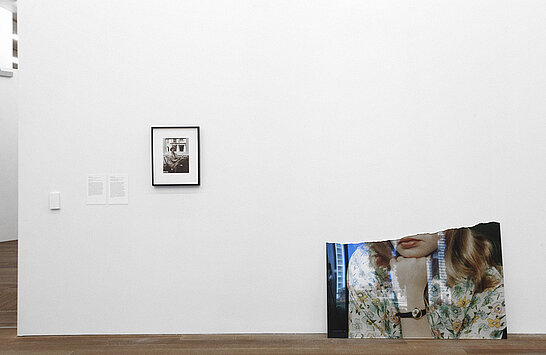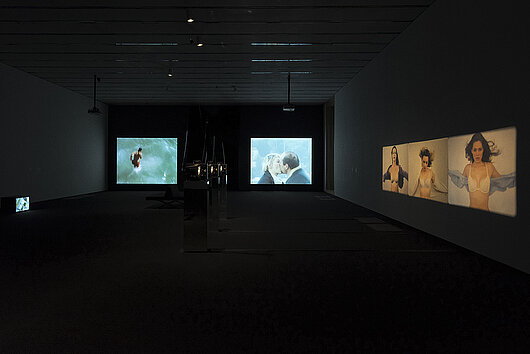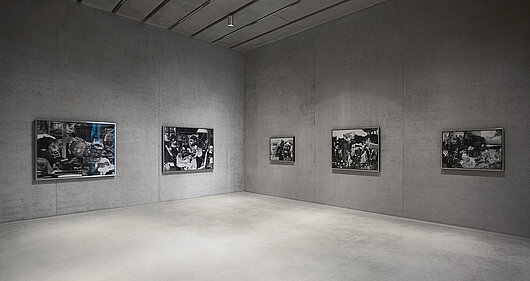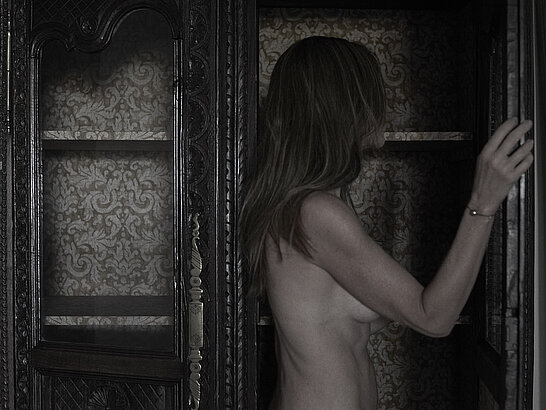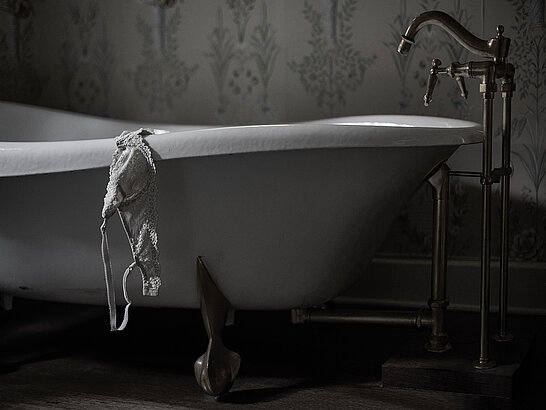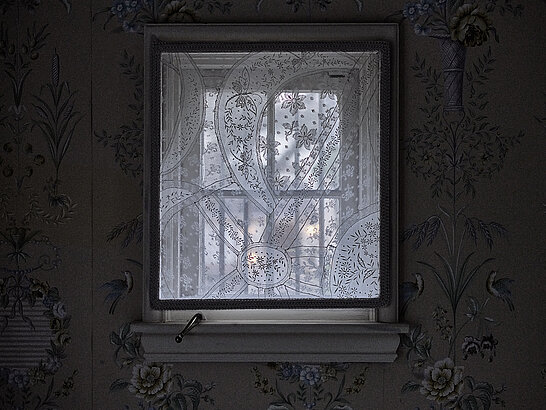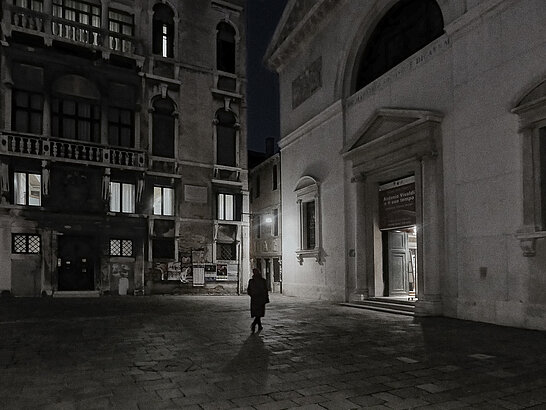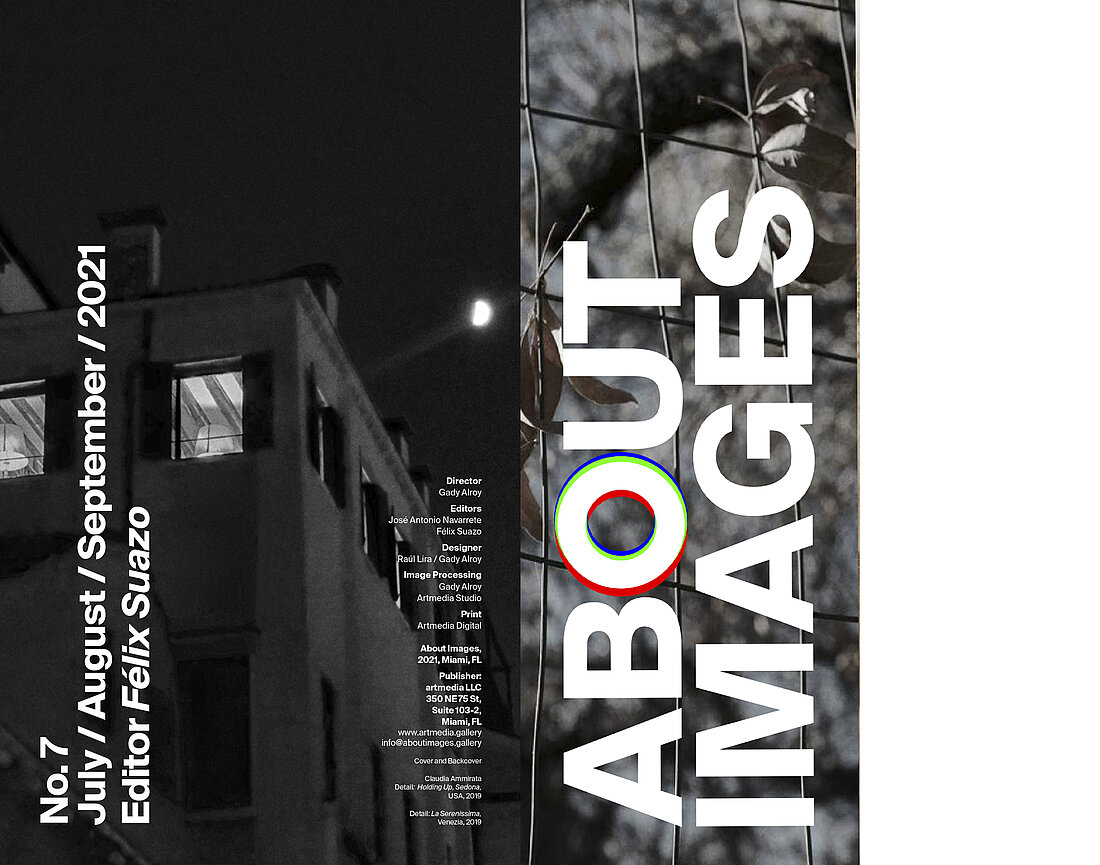
Editorial
Photography gains space and visibility in the heterogeneous contemporary art scene, either autonomously or in dialogue with other artistic media. Its experimental and thoughtful possibilities have been added to its traditional recording function, transcending the technical spectrum. At the same time, photography has increased its circulation capacity thanks to the digital capture and reproduction resources. There is no space or issue in contemporary culture where photography is not involved.
In the circumstances described above, it has become increasingly urgent to disclose the criteria about technical, conceptual, and aesthetic relevance underpinning photographic work. The About Images team has set this task for itself in each published issue, now up to #7.
The evaluation of photographic images requires care. Each artist who works with photography does so with a specific purpose and follows a different process. The discernment of such subtleties corresponds to curatorial practice, exhibition work, and specialized art criticism, activities that mediate between the authors and the public. In this issue, the Interview with curator René Morales sheds light on the handling of photography in his experience as a curator. A brief but powerful reflection by German photographer Thomas Struth confronts us with the link between photography, museums, and the public. The artist pages, dedicated to Claudia Ammirata, show a unique photographic perspective on the concept of impermanence. The Memories section traces a geographical and chronological journey through some significant moments in photography on the five continents. In the informative News, we find recent examples of the photographic presence in some of the leading museums in South Florida.
The Cuban poet José Lezama Lima said that everything that man testifies, he does as an image. Although Lezama Lima did not refer specifically to the photographic image, his statement also suggests the testimonial potential of photos. As literature, painting, and cinema, photography always leaves a visible human trace. At About Images, we celebrate all that is human in photographs.
By Félix Suazo
In the late ’80s (...) I felt a necessity to say something about museums, looking, and this realm of contemplation, as museums were beginning to get very crowded. The majority of people are interested but they don’t really know what they are looking at and there is all this uncertainty of how to deal with this ‘hot potato’. But compared to now that is yet another story. When you go to the Prado in Madrid you see people immediately take out their cellphone and take a picture of a painting, which they may or may not look at when they get home, instead of looking at it in reality. It’s really absurd, I don’t know what the next step will be.
Thomas Struth
“Thomas Struth Interview”. By Freire Barnes. May 12, 2015.
In: www.timeout.com/london/art/thomas-struth-interview
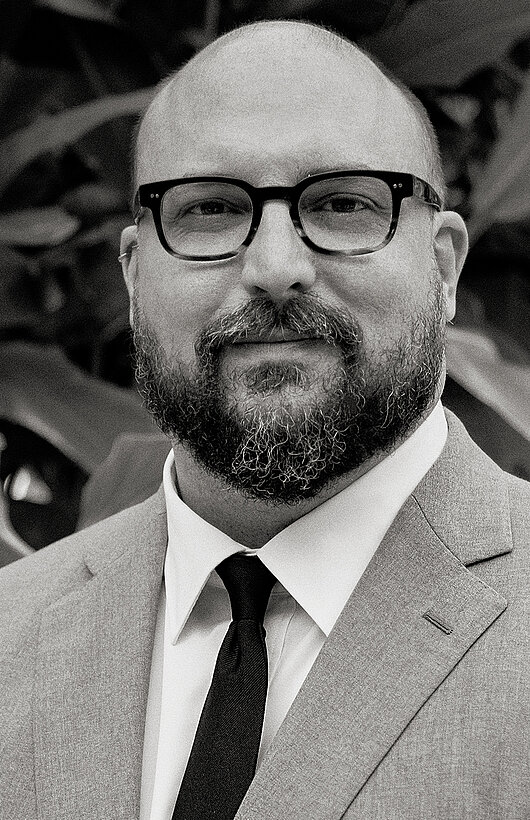
Interview with René Morales
By Félix Suazo
Lázaro Llanes. René Morales, 2019. Image courtesy of PAMM
René Morales is a Cuban-American art curator, programmer, researcher, and artistic manager. He received his BA from Swarthmore College and his MD in Art History from Brown University. Morales is Director of Curatorial Affairs and Chief Curator of Pérez Art Museum Miami-PAMM since 2020. His professional versatility has allowed him to conceive and organize solo and group exhibitions, lead the process of acquiring works from various institutions, participate as a juror in major art competitions and advise the city’s public art programs.
Félix Suazo
Your curatorial work spans a broad spectrum of artistic themes, media, and languages. How do you approach the photographic image in your curatorial projects?
René Morales
Yes, I’ve always placed strong emphasis on versatility, diversity, experimentation, and freedom in general in my curatorial approach. I’ve never wanted to be pigeonholed. I’ve always collaborated with artists who work in a broad spectrum of mediums, focusing in on a wide variety of topics (from climate change to phenomenology), while tackling contemporary as well as historical projects (particularly in the realm of Latin American and Caribbean modernism). I generally tend to de-emphasize the centrality of medium in artistic creation, focusing instead on concepts and subject matter that go beyond questions of medium-specificity. That said, artists who work in photography are undoubtedly able to tackle such concepts in particular ways, harnessing aspects of their chosen medium to bring about specific ideas and effects. A good example is the mid-career survey I organized of the work of artist-filmmaker Dara Friedman. Trained in the Structural filmmaking tradition, Friedman expertly makes use of properties that are specific to her medium (the nature of particular film stock, the spatial potentialities of film and video projection, in-camera editing techniques as well as intense post-production work, etc.). But she turns the medium-specificity associated with Structural filmmaking on its head, employing this tendency’s strategies to achieve a greater degree of emotional, even visceral connection with anyone who encounters her work. Dara uses the camera as an extension of her body, a form of extension that carries over to the viewer.
FS
What is the importance of photography in the PAMM Collection?
RM
Photography is one of the core strengths in PAMM’s collection, thanks, initially, to a major gift of 101 photographs from collector Charles Cowles. The items in this grouping include important photographs by the likes of Edward Steichen, Gary Winogrand, William Eggleston, Diane Arbus, James Van Der Zee, Walker Evans, Margaret Bourke-White, and Robert Mapplethorpe, among many others. Thanks to patrons such as Bonnie and Simon Levin, the museum’s collection also includes impressive holdings in the socially oriented New York Photo League (Sid Grossman, Ruth Orkin, Arthur Liepzig, etc.). As a group, these holdings allow us to provide a great overview of 20th century photography in all its facets, from classic street photography to studio-based portraits and figurative images.
Over the years we have worked hard to buttress these strengths in the collection with acquisitions by more recent photographers who take a more conceptual approach to the medium, such as Taryn Simon and Akram Zatari, while simultaneously working to diversify the photo collection, with acquisitions of works by Gordon Parks, Paul Mpagi Sepuya, Kwame Brathwaite, and so on. While not as large as that of some of the bigger encyclopedic museum collections, ours gives us the opportunity to represent the medium in a well-rounded way.
FS
How do you perceive the relationship between museum and photographic collecting today?
RM
There’s no doubt that photography has come to play a central role in museums, as witnessed, for example, in the recent Dawoud Bey survey at the Whitney Museum. The old biases against the medium have thankfully faded away in the context of both institutional collections and exhibition programs, if not the market per se. For museums that continue to distinguish artworks by media in their displays, but especially for those that rely on thematic groupings, photography adds a welcome kind of visual texture to the visitor’s experience. It has been frequently pointed out that with the proliferation of high quality cameras in cell phones, everyone has become a photographer. Combined with the internet and especially social media, this proliferation has had an inestimable impact on our visual culture. Museum displays of photography help clarify what the medium is truly capable of. At the same time, the societal proliferation of digital photographic images has come to inform a lot of recent artistic practices, in the realm of art photography and even in painting, sculpture, and installation, as we can see in the work of artists like Joiri Minaya, Katja Novitskova, Marlo Pascual, and many others. Artists like Trevor Paglen have used the medium to explore critical issues of power, surveillance, the post-human... In other words, our culture has developed in ways that have made photography all the more vital as a tool for human expression and exploration, and vice versa – the medium continues to have a major influence on how we experience and understand our world through the lens of contemporary culture.
The Impermanence of Everything
Photographs by Claudia Ammirata
By José Antonio Navarrete
Photography only records appearances and seems convinced that the possibility of apprehending beings and things lies on them. It distrusts the means that pretend to reach the place where the so-called essences are supposedly hidden. Its actions endorse the idea that the essential can only manifest itself to knowledge through its own exteriority. Nevertheless, stubborn in satisfying an interpretation of the world, photography often fails in this attempt because it does not know much about what to do with the surface. It seems that photography achieves its purpose when the surface of things becomes a discourse and, with no obstacle, a reservoir of emotions too. Sense of Impermanence, the most recent
photographic series by Claudia Ammirata, brings together a repertoire of images that may allude to all that has been said so far.
How to make “visible” the perishable condition of things that still exist? To put it even more precisely, how to make this condition “visible” without recording things “in articulo mortis”? To achieve this, Ammirata has applied two strategies of visual construction that, combined, enhance their individual effectiveness. One has been capturing the subject of each photograph as coexisting past and present simultaneously: one always becoming the other. In the images of Sense of Impermanence, the past stretches into the present, and the present looks at the past.
Another strategy lies in the use of color. Although these images undoubtedly show that they are the product of a contemporary sensibility, their ascription to the present has been neutralized through the technique of color desaturation. They are identifiable as the result of a current gaze while their temporal ascription to the present is deliberately interrupted. This characteristic accentuates their movement from the present to the past and vice versa: the transitory condition of the things they allude.
Memories
1848
Until 1855, James McClees (1821-1887) and Washington L. Germon (1823-1877) are listed as McClees & Germon running a daguerreotype gallery at the Southeast corner of Eighth and Chestnut Streets in Philadelphia.
1863
Felice A. Beato (Venice, 1832 - Florence, 1909) arrives in Yokohama, Japan, and opens his first commercial photographic studio, a fact at the beginning of his extended and close relationship with the country demonstrated in his two-volume album Photographic Views of Japan, published in 1868.
1901
A cinematographic operator for the Lumière brothers between 1896-1900, French photographer and filmmaker Gabriel Veyre (1871-1936) travels to Marrakech to teach photography to Moulay Abdel Aziz (1878-1943), later the young Sultan of Morocco from 1904 to 1908.
1907
Korean painter and calligrapher Kim Gyu-jin (1869-1933) and his associated Park Wi-jin open the Cheonnyeondang Photo Studio in Seoul, where women are portrayed in a separated area from the men and have assigned a female photographer.
1915
In Uruguay, the municipal government of Montevideo organizes a photographic service as part of its Propaganda and Informational Office, hiring Isidoro Damonte as the first photographer.
1925
Gleason Waite Romer (1887-1971) arrives in Miami and portrays South Florida until the 1950s, with a conscious aesthetic intention that makes him the first art photographer in the city.
1932
Horino Masao (1907-2000) publishes in Japan his seminal book Camera: Eye x Steel. Composition (Kamera: Me x Tetsu. K?sei), in which the photographer explores the new machine aesthetic promoted by avant-garde photography.
1938
Homai Vyarawalla (1913-2012), India’s first female press photographer, begins his long career in journalism when the Bombay Chronicle commissions her to capture images of daily life in Bombay —today Mumbai—, earning one or two rupees per photograph.
1946
In May, the Foto Clube Bandeirante launches in Sao Paulo the first issue of the Boletim FCB, a magazine that contributes to place modern photography aesthetic at the first rank in Brazil in the 1950s.
1952
French Henri Cartier Bresson (1908-2004) publishes his book Images à la Sauvette, also edited in English the same year with another title, The Decisive Moment and rapidly esteemed like a Bible for modern photographers interested in recording life artistically.
1955
Photographer, collector and photo-historian Helmut Gernsheim (1913-1995) and his collaborator, his wife Alison (1911-1969), publish with the editorial Oxford Press the book The History of Photography From the Earliest Use of the Camera Obscura in the Eleventh Century up to 1914, considered as a milestone in the history of photography as a scholar discipline.
1963
Ed Ruscha (1937), a painter, printmaker, drawer, photographer, and filmmaker associated with the American pop art movement, publishes Twentysix Gasoline Stations, his first photo-book and one of the most important and influential artist book in history.
1970
With a preface by well-known writer Carlos Fuentes (1928-2012), Mexican Siglo XXI Editores publishes América: un viaje a través de la injusticia, a photo-book by Enrique Bostelmann (1939-2003) that summarize at the date the development of social concerned photography in Latin American.
1995
On January 21, the only public museum in Japan devoted to photography and moving images opens as the Tokyo Metropolitan Museum of Photography, but is renamed in 2016 as the Tokyo Photographic Art Museum.
2013
From September 13 until November 3, The National Gallery of Modern Art, in New Delhi, exhibits Through a lens, by a Mirror, the Parsis (1977-2013), an extensive photographic essay by Sooni Taraporevala (Mumbai, 1957) about the Parsi identity, a community of Indians that follow the Zoroastrian faith.
2020
African Cosmologies: Photography, Time, and the Other, the central exhibition of the FotoFest Biennial 2020, curated by Mark Sealy, opens on March 8 in Houston, Texas, including artworks by 32 African or African descendant artists settled around the world.
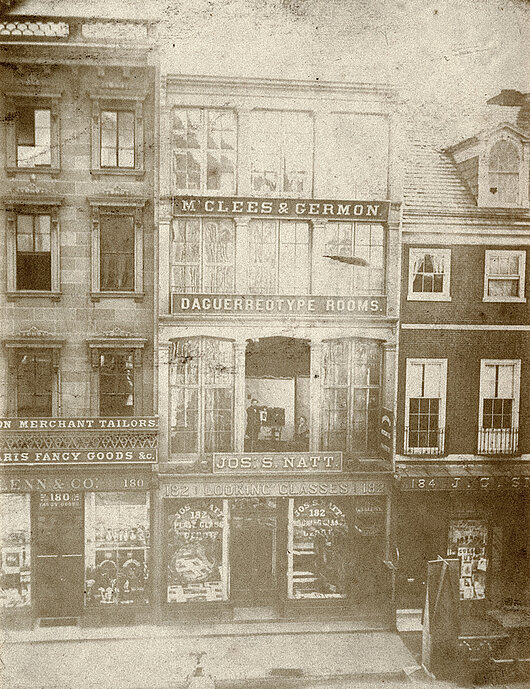
Jas. E. (James E.) M’Clees
M’Clees & Germon, daguerreotype rooms
182 Chestnut Street, Philadelphia
ca. 1853, Daguerreotype
Library Company of Philadelphia
News
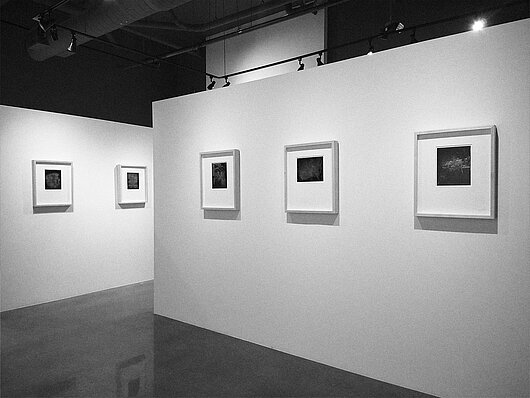
1 Miquel Salom. Ictum Olim VII. Fulgor
Doral Contemporary Art Museum - DORCAM
May 21-June 21, 2021
The Mallorcan photographer Miquel Salom (1951) presented a series of Alumitype Wet Plate Collodion originals, 8 x 10 in size, in celebration of Manolo Valdes´s Legacy exhibition of monumental sculptures in Miami. The collodion technique, created in the 19th century, requires photographic material to be coated, sensitized, exposed and developed in about fifteen minutes, necessitating a portable darkroom for field use. The exhibition includes a video documentary on the process and some of the equipment used during the recording and developing of the photographs.
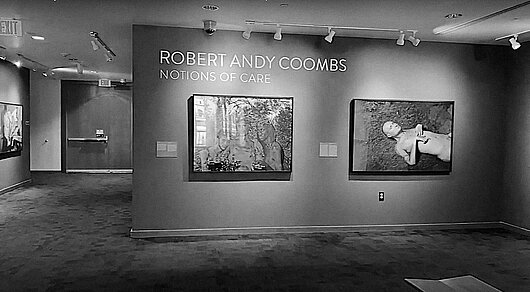
2 Robert Andy Coombs. Notions of Care
Patricia & Phillip Frost Art Museum, Miami
August 14, 2021-November 7, 2021
American photographer Robert Andy Coombs (Michigan, 1987) presents a selection of works from his series Cripfag, a term that combines the epithets “crip” and “fag.” From there, the author generates a new context in which personal and revealing moments are carefully and sensitively exposed. Coombs presents his own body boldly and confidently, creating personal narratives that invite the viewer to participate in the intimate details of his life.

3 Origin Stories: Photography of Africa and Its Diaspora
Norton Museum of Art, West Palm Beach
April, 2021-January 16, 2022
The group exhibition Origin Stories: Photography of Africa and Its Diaspora discusses how the legacy of colonialism across the African continent informs the work of various contemporary photographers, such as Yinka Shonibare CBE, Malick Sidibé, and Carrie Mae Weems. The exhibition primarily comprises works from the Norton Collection, including images that address notions of identity and diaspora.
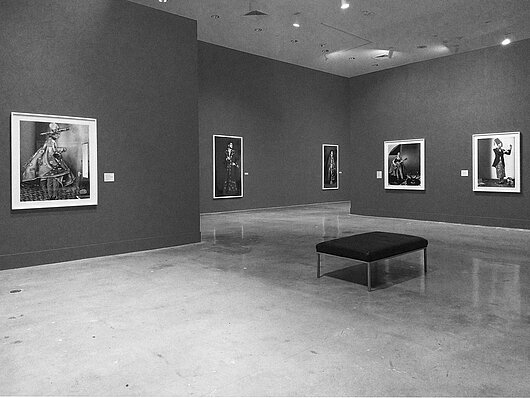
4 Iké Udé: Select Portraits
NSU Art Museum, Fort Lauderdale
April 4, 2021-January 9, 2022
Nigerian-born, New York-based artist Iké Udé (Lagos, Nigeria, 1964) presents a selection of color-saturated conceptual photographs. The exhibition includes self-portraits, portraits of key figures in Nigeria’s Nollywood film industry, and characters drawn from the artist’s circle. The images explore a range of dualities such as photographer/performance artist, artist/viewer, mainstream/fringe, and fashion/art.



